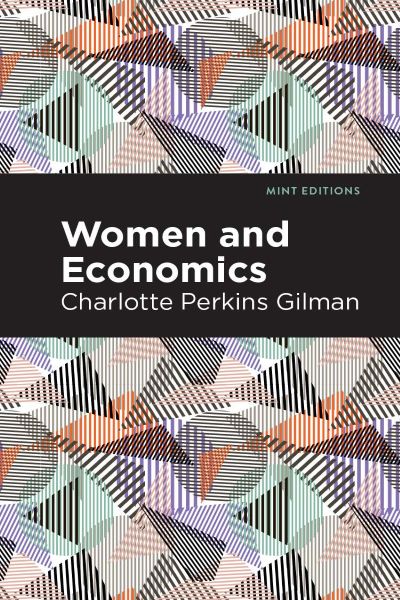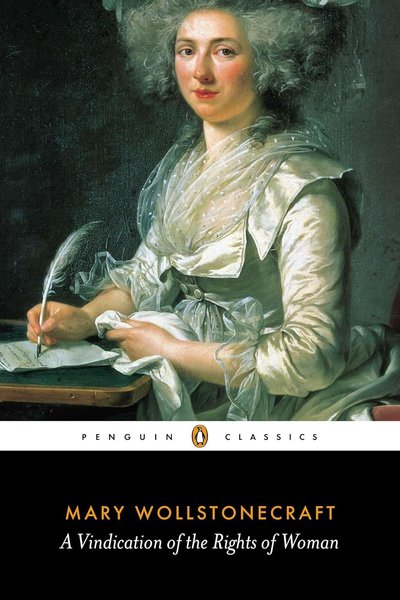Women and Economics: A Study of the Economic Relation Between Men and Women as a Factor in Social Evolution
A groundbreaking 1898 feminist economics work that systematically analyzes the social roots of women's economic dependency and proposes theoretical foundations for women's economic independence. Praised as an important document comparable to Mill's 'The Subjection of Women'.

📝 Book Review
In the intellectual history of feminism at the turn of the 19th and 20th centuries, Charlotte Perkins Gilman’s “Women and Economics: A Study of the Economic Relation Between Men and Women as a Factor in Social Evolution” occupies a milestone position. This groundbreaking work published in 1898 stands not only as the foundational text of modern feminist economics but as the first systematic academic study analyzing the relationship between women’s economic status and social evolution. When the book appeared, Gilman was immediately hailed as the leading intellectual of the women’s movement, with the work translated into seven languages and its influence compared to John Stuart Mill’s “The Subjection of Women.”
Gilman wrote this work during America’s rapid industrialization period, when traditional family economic models faced unprecedented challenges. As an intellectual woman who personally experienced economic hardship and marital constraints, Gilman keenly perceived the fundamental nature of women’s economic dependency problem. She was not merely a theorist but a practitioner who achieved economic independence through her own writing and speaking, providing solid empirical foundation for her theoretical construction.
The core argument of “Women and Economics” is that women’s economically dependent status represents an anomaly in human social evolution—an anomaly that not only hinders individual women’s development but seriously affects the evolutionary progress of the entire human race. Using Darwinian evolutionary thought, Gilman demonstrated that in nature, female animals typically possess economic independence and can maintain their own survival, with human women being the exceptional case of complete dependence on male economic support.
This analysis was revolutionary in elevating women’s issues from moral or emotional levels to scientific and evolutionary heights. Gilman pointed out that women’s economic dependency led to their commodification within marriage relationships, forcing women to exchange “sexual services” and “domestic services” for survival resources. This exchange relationship was essentially a form of disguised prostitution, merely legitimized by the institution of marriage. This sharp observation caused tremendous controversy at the time but profoundly revealed the hidden power inequalities within traditional marriage systems.
The Science of Economic Dependency
Gilman further analyzed how this economic dependency relationship damaged women’s individual development. She observed that when women’s survival depended entirely on pleasing men, they lost opportunities and motivation to develop their own talents and abilities. Women were forced to invest all their energy in enhancing their “sexual attractiveness” rather than developing productive capacities or social contributions. This situation not only wasted women’s human resources but hindered overall social progress.
The analytical framework Gilman employed drew heavily on evolutionary theory, positioning women’s economic dependency as an evolutionary aberration that contradicted natural patterns of development. This scientific approach gave feminist arguments new legitimacy by grounding them in contemporary understanding of biological and social evolution.
Her economic analysis revealed how financial dependency created a system of prostitution disguised as marriage, where women traded sexual and domestic services for economic survival rather than developing their productive capacities.
Visionary Solutions and Social Reorganization
Regarding solutions, Gilman proposed remarkably prescient ideas. She argued that women must achieve economic independence, meaning not only that women should participate in social production but that society’s production and reproduction patterns required fundamental reorganization. She envisioned new forms of social organization where domestic labor and childcare would be professionalized and socialized, thereby liberating women to participate in broader social productive activities.
This vision included specific measures such as professional household services, collective kitchens, and specialized childcare institutions. Gilman believed that just as other industries evolved from household handicrafts to socialized large-scale production, domestic labor and childcare should undergo similar transformation. Only through such changes could women be liberated from heavy repetitive household labor to realize their creative potential.
The professionalization proposal anticipated many later developments in social services while challenging fundamental assumptions about the sexual division of labor and the organization of social reproduction.
Gilman’s solutions demonstrated remarkable foresight in recognizing how technological and organizational innovations could reshape gender relations through transformed economic structures.
Redefining Motherhood
“Women and Economics” offered highly insightful analysis of motherhood. Gilman distinguished between biological motherhood and socially constructed concepts of motherhood. She pointed out that traditional motherhood concepts were often used to confine women within domestic spheres, but true motherhood should include concern for the future of the entire human race. Therefore, women’s participation in social production and public affairs actually fulfilled higher-level maternal responsibilities.
This redefinition of motherhood profoundly influenced later feminist theory. It provided moral and theoretical legitimacy for women’s participation in public life while avoiding simple negation of women’s reproductive functions. Gilman skillfully transformed feminine qualities into positive forces for social change rather than shackles binding women.
The expanded conception of motherhood connected private care work to public social responsibility, suggesting that women’s nurturing capacities equipped them for broader social roles rather than confining them to domestic spaces.
This approach allowed Gilman to argue for women’s public participation without rejecting traditional feminine values, creating bridge between conventional gender roles and revolutionary social change.
Contributions to Economic Theory
From an economic theory perspective, “Women and Economics” made important contributions. Gilman was among the first scholars to systematically introduce gender analysis into economic research. She pointed out that traditional economics ignored women’s unpaid labor, an oversight that was not only statistically wrong but theoretically harmful. Women’s domestic labor and childcare created enormous social value, but this value received no recognition in contemporary economic systems.
Gilman’s analysis prefigured later theoretical developments regarding “shadow economy” and “care economy.” She keenly perceived that economic systems ignoring women’s labor contributions were necessarily incomplete and unsustainable. This insight remains highly relevant today, particularly in discussions about valuing domestic labor and designing social security systems.
Her economic analysis revealed how conventional measures of productivity and value systematically excluded women’s contributions while creating theoretical frameworks that normalized this exclusion.
The recognition of unpaid labor as economically productive work challenged fundamental assumptions about what constituted real economic activity and social value creation.
Socialist Tendencies and Collective Solutions
“Women and Economics” also reflected distinct socialist tendencies. Gilman believed that individualistic economic systems could not truly solve women’s problems; only through collective and socialized reorganization of production and life could genuine gender equality be achieved. This perspective formed interesting dialogue with contemporary Marxist thought, though Gilman’s analysis focused more on gender than class.
Her vision of socialized domestic services and collective child-rearing anticipated many features of socialist feminist proposals while maintaining focus on gender transformation rather than class revolution.
The collective solutions Gilman proposed suggested that individual liberation required fundamental social reorganization rather than simply expanding women’s opportunities within existing systems.
This structural approach distinguished her work from liberal feminist approaches that focused primarily on removing barriers to women’s individual advancement.
Critique of Beauty Standards and Fashion Industry
The book’s critique of beauty standards and the fashion industry was remarkably prescient. Gilman observed that when women’s economic status depended entirely on attracting men, they were forced to invest enormous time, energy, and money pursuing so-called “beauty.” This excessive focus on appearance was not only wasteful of resources but created obstacles to women’s capacity development. This analysis anticipated later feminist critiques of the beauty industry and body politics.
The analysis of beauty culture revealed how economic dependency created markets for women’s insecurity and self-improvement, transforming women into consumers of their own oppression.
Gilman’s critique connected beauty standards to economic structures, showing how women’s financial dependency created markets for products and services that reinforced their subordination.
This economic analysis of beauty culture provided foundation for understanding how consumer capitalism profits from gender inequality while appearing to celebrate women’s choices and self-expression.
Impact on Feminist Movement
“Women and Economics” influenced far beyond academic circles. The book provided important theoretical weapons for the first wave feminist movement, particularly offering economic arguments for women’s suffrage. If women were completely economically dependent on men, they could not achieve genuine political independence. Therefore, economic independence became a prerequisite for political liberation.
This perspective had lasting influence on later feminist theory and movements. From second wave feminist discussions of “wages for housework” to third wave feminist concerns about work-life balance, all can be traced to basic insights Gilman proposed in this book. Her analytical framework helped later feminists understand deep connections between economic structures and gender oppression.
The suffrage movement found in Gilman’s work powerful arguments connecting political rights to economic independence, demonstrating how gender equality required transformation of both political and economic institutions.
Her economic arguments provided foundation for understanding how political equality remained hollow without accompanying economic autonomy and structural change.
International Influence and Translation
“Women and Economics” significantly influenced international feminist movements. Translated into multiple languages, the book had important impact in Europe and other regions. It provided feminists from different cultural backgrounds with common theoretical language, promoting development of international feminist movements.
The international reception demonstrated how economic analysis of gender relations transcended cultural boundaries while providing tools for understanding specific local conditions and their relationship to broader patterns of women’s oppression.
Translation and circulation of the work contributed to emerging international feminist consciousness and solidarity across national boundaries.
The book’s influence on European feminist thought helped establish economic analysis as central component of feminist theory rather than peripheral concern.
Historical Limitations and Contemporary Relevance
From today’s perspective, “Women and Economics” also has historical limitations. Gilman’s analysis primarily focused on white middle-class women’s experiences, with relatively insufficient consideration of racial and class differences. Her vision of professionalizing domestic labor might ignore new inequalities such professionalization could create, such as who would perform this professionalized domestic work and how their labor conditions would be guaranteed.
Additionally, Gilman’s use of evolutionary theory carried characteristics of that era, including assumptions we would find problematic today. Some of her viewpoints might be considered overly simplified or deterministic by modern readers. However, these limitations cannot obscure the book’s groundbreaking contributions and continuing theoretical value.
The historical specificity of Gilman’s analysis provides important lessons about how feminist theory must continuously evolve to address changing conditions and include previously marginalized perspectives.
Contemporary readers can appreciate both the revolutionary insights and the particular limitations that reflect the historical moment of the work’s production.
Literary Style and Rhetorical Power
In terms of style and rhetoric, “Women and Economics” demonstrated Gilman’s talents as writer and speaker. She skillfully used vivid metaphors and concrete examples to illustrate abstract theoretical points, making complex economic analysis accessible and understandable. Her writing combined academic rigor with strong emotional coloring, enabling the book to satisfy intellectuals’ needs while touching ordinary readers’ hearts.
The rhetorical strategy combined scientific authority with passionate advocacy, creating persuasive force that appealed to both rational analysis and emotional commitment to justice.
Gilman’s ability to make economic theory accessible through concrete examples and clear prose contributed significantly to the book’s influence beyond academic circles.
The combination of analytical rigor and emotional appeal helped establish feminist economics as both intellectually serious and politically urgent field of inquiry.
Contemporary Applications and Digital Economy
Today, when facing new economic forms and work patterns, rereading “Women and Economics” still provides important insights. Digital economy development, remote work proliferation, gig economy emergence and other new phenomena have renewed discussions about work-life balance, economic independence, and family responsibilities. Gilman’s analysis of relationships between economic structures and social organization provides valuable theoretical frameworks for understanding these new phenomena.
The rise of platform capitalism and flexible work arrangements creates new forms of economic dependency while potentially offering new opportunities for women’s economic autonomy.
Contemporary discussions about universal basic income, socialized care work, and the value of reproductive labor all connect to theoretical foundations Gilman established over a century ago.
The ongoing relevance of her structural analysis demonstrates how fundamental questions about gender, economics, and social organization persist despite technological and cultural changes.
Enduring Legacy and Future Directions
“Women and Economics” as a classic document in feminist intellectual history not only records one era’s women’s predicaments and aspirations but more importantly provides methods and perspectives for analyzing social problems. Gilman taught us that understanding gender inequality requires deep analysis of its economic roots; achieving genuine gender equality requires fundamental transformation of society’s economic structures and production relations.
This insight continues to hold important guiding significance, inspiring new generations of feminist scholars and activists to work toward building more just societies. The book’s framework for connecting individual women’s experiences to broader structural analysis remains essential for contemporary feminist theory and practice.
The work’s emphasis on systematic economic analysis rather than individual solutions continues to influence feminist approaches to policy, organizing, and theoretical development.
Gilman’s vision of transformed social organization through economic restructuring provides continuing inspiration for imagining alternatives to current gender arrangements and economic systems.
Conclusion: Economic Foundation of Gender Liberation
“Women and Economics” stands as foundational text demonstrating how gender equality requires transformation of economic structures rather than simply expanding women’s opportunities within existing systems. Gilman’s insight that women’s subordination stems from economic dependency rather than natural inferiority provided crucial foundation for all subsequent feminist economic analysis.
The work’s combination of scientific authority, structural analysis, and visionary solutions established template for feminist scholarship that remains influential today. By connecting women’s individual experiences to broader patterns of social organization, Gilman created framework for understanding how personal transformation and social change interconnect.
Her emphasis on economic independence as prerequisite for all other forms of women’s liberation continues to resonate in contemporary struggles for gender equality. The book reminds us that achieving women’s full equality requires not only changing laws and attitudes but fundamentally reorganizing how society distributes economic power and organizes productive and reproductive labor.
“Women and Economics” ultimately demonstrates how intellectual work can serve liberation movements by providing theoretical foundations for envisioning and creating more just alternatives to existing social arrangements. Gilman’s legacy lies not only in her specific proposals but in her demonstration that rigorous analysis of current conditions can open space for imagining radically different futures based on equality, justice, and human flourishing.
Discussion
读书讨论
分享您对这本书的感想和看法,与其他读者交流见解
加入讨论
分享您对这本书的感想和看法,与其他读者交流见解
加载评论中...
Book Info
🛒 Get This Book
 Buy on Amazon
Buy on Amazon Related Books
读书讨论
分享您对这本书的感想和看法,与其他读者交流见解
加入讨论
分享您对这本书的感想和看法,与其他读者交流见解
加载评论中...

